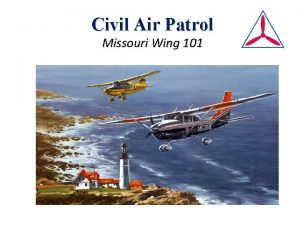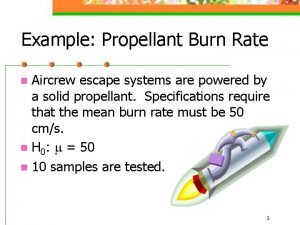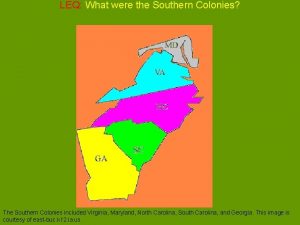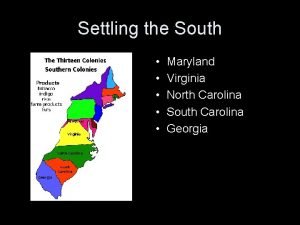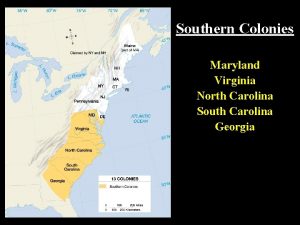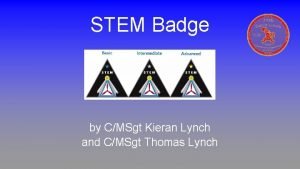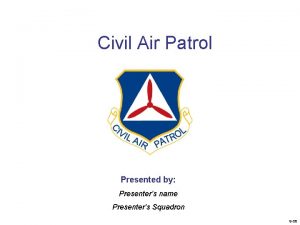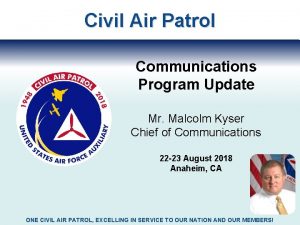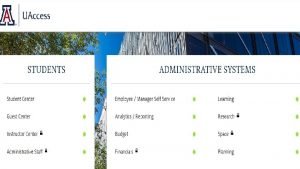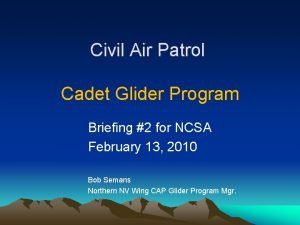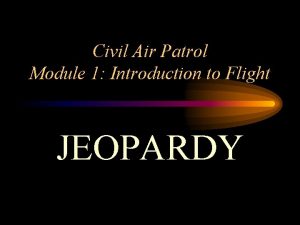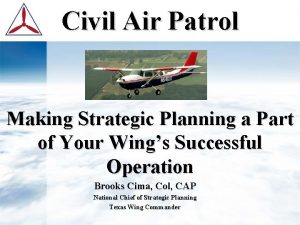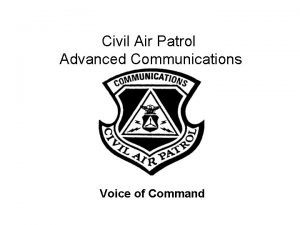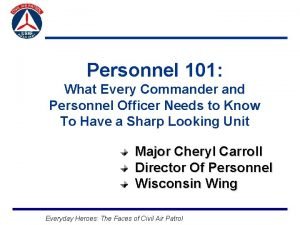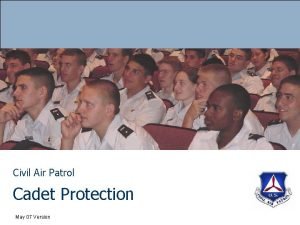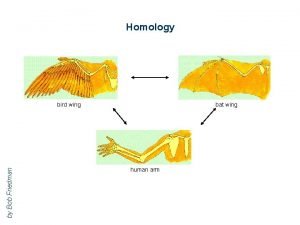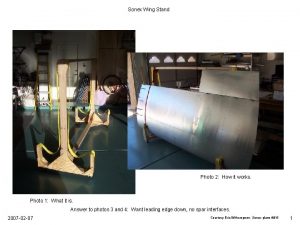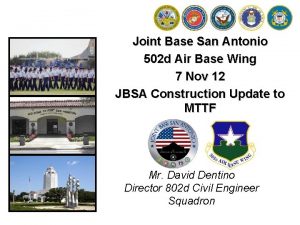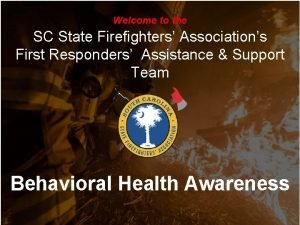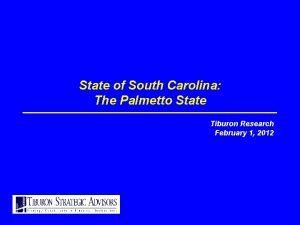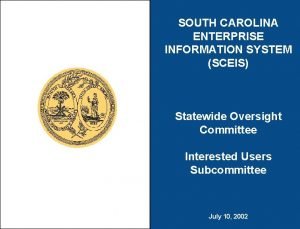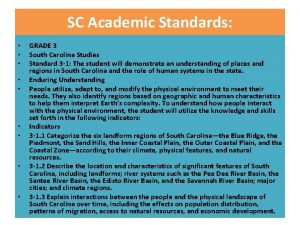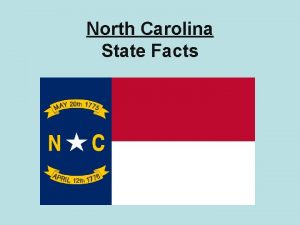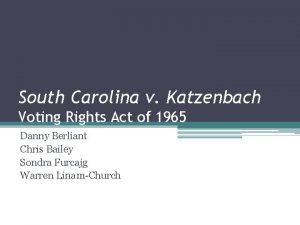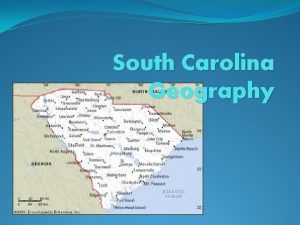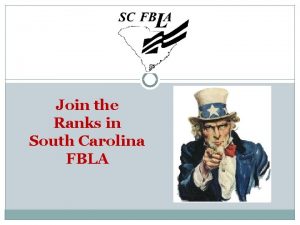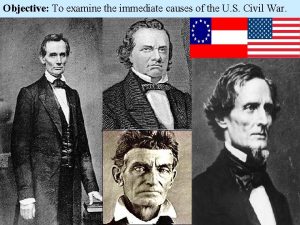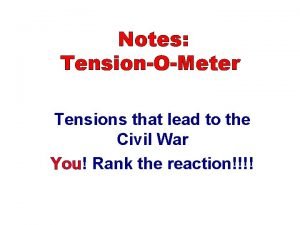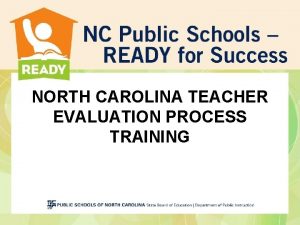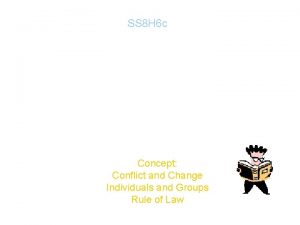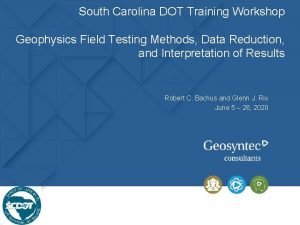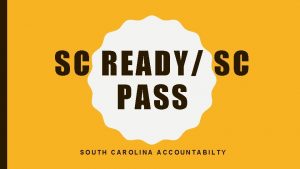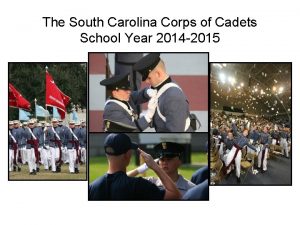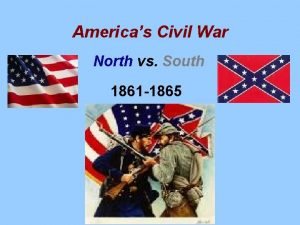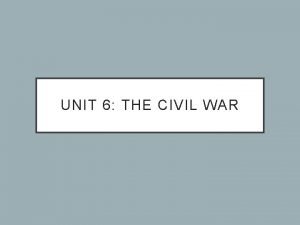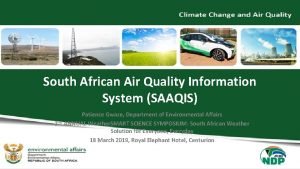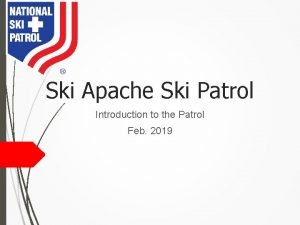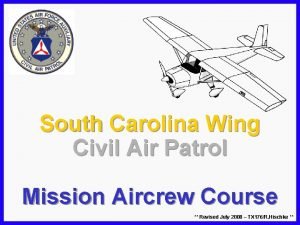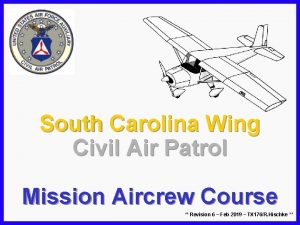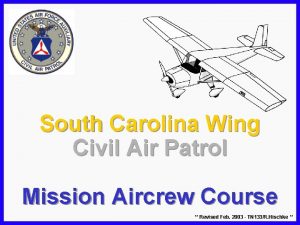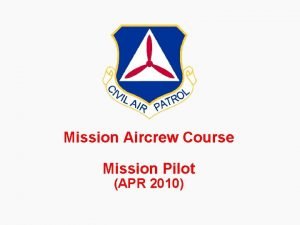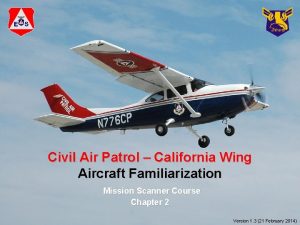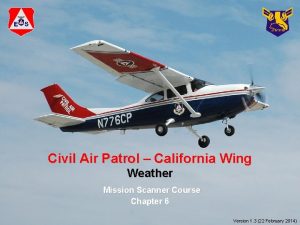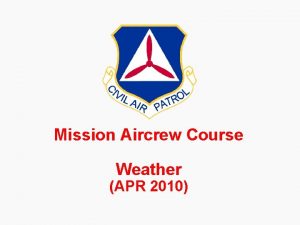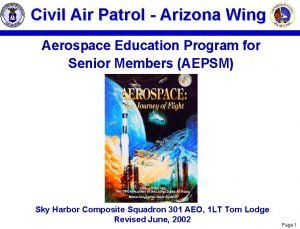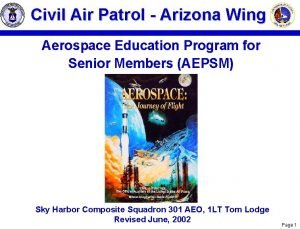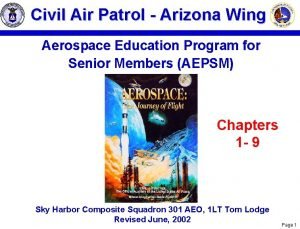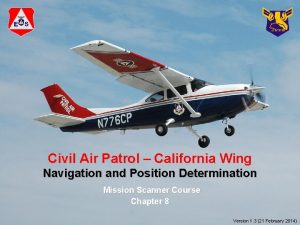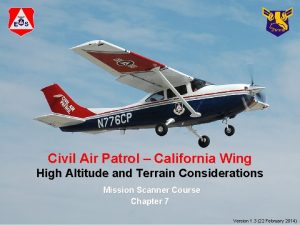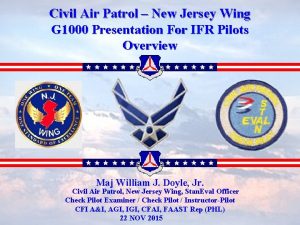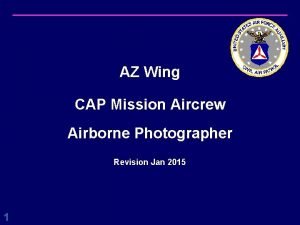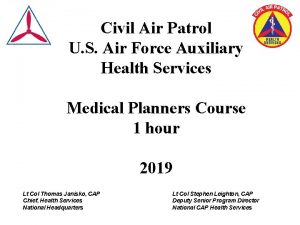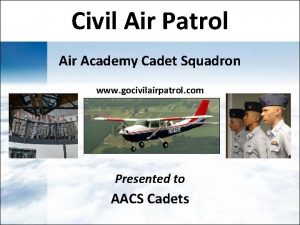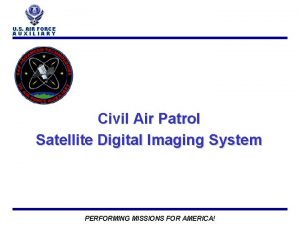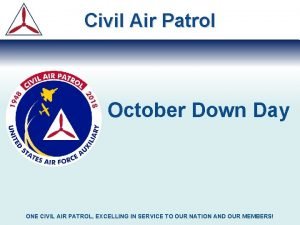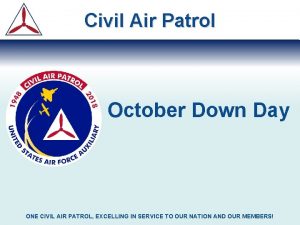South Carolina Wing Civil Air Patrol Mission Aircrew









































































- Slides: 73

South Carolina Wing Civil Air Patrol Mission Aircrew Course ** Revised July 2008 – TX 176/R. Hischke **

Administrative Items So, you wanna train ? ? ? Form 101 m Form 101 Specialty Qualification Card m CAPR 60 -3 NEED GENERAL ES !!!

Mission Scanner Requirements m Trainee • 18 years of age minimum • Complete on-line CAPT 116, ES/ICS tests m Qualification • Preparatory Training per SQTR-MS • Recommend Completion of AFIADL 02130 A Scanner Course • Demonstrate knowledge of procedures and plans • Assist in planning & conducting two sorties • Training conducted & verified by a qualified Mission Scanner

Training Requirements m Visual Search Pattern Procedures m Electronic Search Pattern and Procedures m Aircrew Coordination m Flight Line Operations m Survival and First Aid Procedures m Safety m Scanning Techniques and Sighting Characteristics

Flight Training/Qualification Requirements m Minimum of two separate sorties as a trainee under the direct supervision of a qualified Mission Scanner m Demonstrate Thorough Knowledge and Understanding of: • • Visual Search Pattern Procedures Electronic Search Pattern and Procedures Coordination with Ground Teams/Air-Ground Signals Aircrew Coordination

Scanner Duties m PRIMARY RESPONSIBILITY: Visual Search m Be prepared to fly the mission — clothing, equipment, credentials, etc. m Assist in Completion of pre-mission paperwork m Participate in briefings m Maintain an observer’s log m Conduct the mission as planned m Report observations accurately m Assist in completion of all post-mission paperwork

Mission Observer Requirements m Trainee • Qualified Mission Scanner m Qualification • Preparatory Training per SQTR-MO • CAP Radio Operator Authorization Card • Recommend Completion of AFIADL 02130 B Observer Course • Demonstrate knowledge of Procedures and Plans • Plan & conduct two sorties • Training conducted & verified by a qualified Mission Observer

Flight Training Requirements m Minimum of two separate sorties as a trainee under the direct supervision of a qualified Mission Observer m Visual and electronic search procedures • Visual search patterns as applicable • Electronic search with direction finding equipment • Electronic search without direction finding equipment m Aircrew coordination m Other search mission procedures

Observer Duties m PRIMARY RESPONSIBILITY: Visual Search m SECONDARY RESPONSIBILITY: Assist MP m Be prepared to fly the mission — clothing, equipment, credentials, etc. m Complete pre-mission paperwork m Participate in briefings m Maintain an observer’s log m Conduct the mission as planned m Advise the mission base of status m Report observations accurately m Complete all post-mission paperwork

Mission Pilot Requirements m Trainee • Qualified Mission Scanner • Highly recommended to be Qualified Mission Observer • Current CAP Pilot with 175 Hrs. PIC incl. 50 Hrs. X/C • Preparatory Training per SQTR-MP m Qualification • CAP Radio Operator Authorization Card • Complete MISSION AIRCREW Course • Fly two separate training sorties • Demonstrate capability to fly search patterns • Complete evaluation flight check - CAPF 91. • Training conducted & verified by a qualified Mission Pilot

Mission Forms Radio Operator Authorization Card m Complete Basic Comm User Training m CAP Form 76 (ROA) m CAPR 100 -1

SQTR’s m Specialty Qualification Training Records m CAPR 60 -3 & e. Services m SQTR-MS - Mission Scanner m SQTR-MO - Mission Observer m SQTR-MP - Mission Pilot m etc.

SQTR-MS

SQTR-MO

SQTR-MP

Form 101 m Form 101 Specialty Qualification Card m CAPR 60 -3 & e. Services

Forms 104 and 108 m CAPF 104 Mission Flight Plan / Briefing / Debriefing Form • CAPR 60 -1 • Completed for each mission sortie m CAPF 108 CAP Payment / Reimbursement Document for Aviation / Automotive / Miscellaneous Expenses • • CAPR 173 -3 Completed for each mission File within 30 days after mission completion Processing may take weeks

FAA Flight Plan m FAA Form 7233 -1 U. S. DEPARTMENT OF TRANSPORTATION FEDERAL AVIATION ADMINISTRATION (FAA USE ONLY) PILOT BRIEFING VFR 2. AIRCRAFT IDENTIFICATION TIME STARTED SPECIALIST INITIALS STOPOVER FLIGHT PLAN 1. TYPE VNR 3. AIRCRAFT TYPE/ SPECIAL EQUIPMENT 4. TRUE AIRSPEED 5. DEPARTURE POINT 6. DEPARTURE TIME PROPOSED (Z) ACTUAL (Z) 7. CRUISING ALTITUDE IFR DVFR KTS 8. ROUTE OF FLIGHT 9. DESTINATION (Name of airport and city) 12. FUEL ON BOARD MINUTES 10. EST. TIME ENROUTE HOURS 13. ALTERNATE AIRPORT(S) 11. REMARKS MINUTES 14. PILOTS NAME, ADDRESS, & TELEPHONE NUMBER & AIRCRAFT HOME BASE HOURS 15. NUMBER ABOARD 17. DESTINATION CONTACT / TELEPHONE (OPTIONAL) 16. COLOR OF AIRCRAFT FAA Form 7233 -1 (8 -82) CIVIL AIRCRAFT PILOTS, FAR Part 91 requires you file an IFR flight plan to operate under instrument flight rules in controlled airspace. Failure to file could result in a civil penalty not to exceed $1, 000 for each violation (Section 901 of the Federal Aviation Act of 1958 as amended CLOSE VFR FLIGHT PLAN WITH ________FSS ON ARRIVAL

Radio Communications & Procedures m There are many radios in aircraft • ALL have similar features, tuning, volume, squelch • Learn how to operate the radio you will be using m Keep radio transmissions • Use “Code words” • Use “Prowords” • Figures • Time • Phonetic Alphabet m Handouts brief and clear

Ground Team Coordination m CAPR 60 -3 m Ground to Air Signals • • Size equals visibility Natural materials (contrast is important) Body signals Think BIG! Paulin signals m Air to Ground Signals • Aircraft motion • Circling and heading • Racing the engine • Message drop

Ground Signals

Aircraft Motion Signals NO YES Message received and understood

Low Level Navigation THE DANGER m The biggest single problem is crew workload m Your perception of speed varies with altitude SPECIAL ATTENTION m Man-made obstructions m Air crew duties m These items should be covered during the pre -flight briefing.

Position Determination m Electronic means • Radial and distance (DME) from an identified station • Intersection of two radials • Intersection of two reverse courses

Position Determination m Pilotage • Work from larger to smaller • Work from a known location to present location • Watch the scale on maps • Remain suspicious if all points don’t seem to line up right • Use groups of 3 characteristics to verify position

Pilotage Easterly Variation 20º a current chart m Plot course m Choose checkpoints m Measure true course m Adjust for magnetic variation m Correct for wind m Note compass deviation 15º 10º Westerly Variation 5º 0º 5º 10º 15º 20º m Get Agonic Line 26

CAP Grid Systems m Overlay standard sectional maps m Subdivides the map into distinct working areas m Aeronautical Chart System • Each grid is 1/4° of latitude by 1/4° of longitude and is assigned a number m Standardized Latitude/Longitude System • Each primary grid is 1° of latitude by 1° of longitude and is defined by the Lat/Long of the lower right corner • Primary grids are subdivided by appropriate letters for sub-grids

Aeronautical Chart Grid System HOU 101 m m Each 15’x 15’ grid on the sectional is assigned a number In this example, the grids depicted are on the HOU sectional Grids are subdivided into 7. 5’x 7. 5’ sections labeled A, B, C, and D For areas of overlap the grid number of the most westerly chart is used HOU 126 B 96 -00 W 95 -00 W 31 -00 N A B C D 95 -45 W 30 -30 N 30 -00 N 95 -30 W 96 -00 W HOU 176 95 -00 W

Standardized Latitude/Longitude Grid System 30/095 AA 30/095 ADB m This system does not require special numbering m Lat-long of lower right corner defines the primary grid m Letters are used to define sub-grids • A defines a 30’x 30’ grid • AA defines a 15’x 15’ grid • AAA defines a 7. 5’x 7. 5’ grid 96 -00 W 95 -00 W 31 -00 N A C B A B C D B 30 -30 N 95 -45 W D C 30 -00 N 95 -30 W 96 -00 W 95 -00 W

Making Grid Charts m You can use a new sectional — normally not updated unless it gets worn out m Use a hi-lighter (not pink) to mark grid boundaries on the chart using a long ruler m Mark grid identification in black ink for easy visibility m You should always keep a current sectional with you even if you have a sectional which is marked with grids

Search Planning & Coverage m Search Involves • Estimating the position of the wreck or survivors • Determining the area to be searched • Selecting the search techniques to be used m Possibility Area • Circle around the Last Known Position (LKP) • The radius is equal to the endurance of the aircraft • Correct for wind m Probability Area • Where is the aircraft likely to be

Determining the Possibility Area No wind endurance 100 Kts Endurance: 2 Hours Wind vector Maximum possibility area M Aircraft Speed: LKP N 40 Flight level winds: 330/20 200 NM Corrected for wind

Determining the Probability Area m Where was the last point where RADAR had the aircraft identified? m Is there an ELT? m Was there a flight plan (even if not on file with the FAA)? m Dead reckoning from LKP and heading m Reports of sightings • Other aircraft • People living along the intended route of flight

Narrowing the Probability Area m m m m m Flight plan Weather information National Track Analysis Program data Airports along the intended flight track Aircraft performance Pilot’s flying habits Radar coverage as a limiting factor Nature of terrain along the flight track Position reports — fuel stops, etc. Most likely within 5 miles of intended track

Search Priorities m Areas of bad weather m Low clouds and poor visibility m Areas where weather was not as forecast m High terrain m Areas not covered by radar m Reports of low flying aircraft m Survival factors m Radio contacts or MAYDAY calls

Search Coverage m Factors which affect detection • Weather & lighting conditions • Type of Terrain • Search Visibility • Scanning Range • Track Spacing (S) m Determining factors for search area • Type and number of aircraft available • Search visibility • Possibility Area • Probability Area m Probability Of Detection (POD) coverage

Search Coverage Probability Of Detection (POD) m POD expressed as a “percent” that the search object can be detected m Four interrelated factors used to calculate • • Track Spacing (S) Search Visibility Search Altitude Type of Terrain m Cumulative POD calculated using a chart m “Effectiveness” must also be considered

Search Coverage Probability of Detection Chart 38

Search Coverage Cumulative Probability of Detection Chart Previous POD 5 -10% 11 -20% 21 -30% 31 -40% 41 -50% 51 -60% 61 -70% 71 -80% 95 80+% 95 70% 71 -80% 15 20 30 40 50 60 70 80 25 35 45 55 65 70 80 45 50 60 65 75 80 60 65 70 80 85 70 75 80 85 90 90 90 85 95+ 85 90 90 90 95 95 5 -10% 80+% 11 -20% 41 -50% 51 -60% 61 - POD For This Search 21 -30% 31 -40%

Electronic Search Patterns m Requires special skills that must be learned and practiced. Emergency Locator Transmitter (ELT) m m Normally set off by the impact of an airplane crash; can be set off by a hard landing--check 121. 5 before engine shutdown TSO 91 ELTs are most common • 121. 5 MHz • 98% of all ELT activations are false alarms m TSO 91 A ELTs also available • 406 MHz • Signal includes registration information • Has lower false alarm rate - only 90%

Electronic Search m Line-of-sight Signal blocked by the curvature of the earth ELT signals can be blocked Area of Reception

Done using Track Line or Creeping Line pattern m m m Altitude is normally 5, 000 to 10, 000 AGL Use a search pattern assigned by the Mission Coordinator Track Line (route) search or Creeping Line may be used Track Line flown out and back on either side of expected track. Creeping Line flown back and forth covering a large area. Legs flown perpendicular to the general direction the target would have been traveling Search Path of missing aircraft

Homing with DF Equipment m Direction Finding Equipment for 121. 5 MHz m Use standard homing procedures • • Determine direction from the needle indications Turn toward the direction indicated by the needle Proceed until you get a strong “crossover” indication Descend if needed to locate the signal m Homing at low altitudes may cause problems due to interference from the ground or manmade obstacles

Signal Null Method m m Requires a receiver AND a SPECIALLY PLACED antenna, i. e. directly between the wings. Fly the turn, record the heading of the null (where the signal disappears), calculate the direction to the signal (add or subtract 90 deg. ) Low Ant Null Signal Heard High Ant Null vector from first turn High Ant Null Path of Aircraft Low Ant Null High Ant Null Vector from second turn No nulls detected at low altitude Low Ant Null

Aural Search Pattern m m m Only requires a receiver. Don’t touch the volume, or squelch controls while working the pattern. One person should determine the points where the signal fades or returns. Barely audible signal in aircraft receiver at search altitude Second heading First heading Third heading Commence low altitude search Signal faded Signal heard again Chord 1 Signal heard again Chord 2 Signal faded again Chord 3 Signal heard

Metered Search m m Only requires a receiver with a signal strength meter. Watch the strength meter on the receiver. Signal fades out 4 8 2 7 ELT 2 6 4 5 5 6 Second pass -turn to locate ELT 8 6 7 8 First pass- signal detected

Electronic Search Problems m Pattern distortion due to terrain/obstacles • Beware, the signal may lead you AWAY from the actual target. m Signal loss due to terrain m Determination of aural signal • Different people hear sounds differently. m Volume problems • Volume control and Squelch • Automatic volume controls • Individual differences in people m Success requires • Equipment • Knowledge • Practice

Visual Search Patterns & Procedures Track Line (Route Search) m m Used when aircraft missing without a trace - also used at night Rapid and reasonably thorough coverage near the expected track. Track of missing aircraft Track of search aircraft 1/2 S

Visual Search Patterns Parallel Track (“Grid”) m Used for large and fairly level search areas.

Visual Search Patterns Creeping Line m Used when search area is long, narrow, fairly level and target is thought to be on either side of the expected track. Direction of Search s s s

Visual Search Patterns Expanding Square (second pass rotated 45°) m m Used when the approximate location of target is known - very difficult to fly without a GPS. Gradually will cover a larger and larger area. 4 S 2 S 5 S 3 S S 2 S 4 S 3 S 5 S

Visual Search Patterns Sector Search m Used when the position of the distress incident is known to be within close limits; i. e. , there was a MAYDAY call with definite location. S max The pattern and headings are planned in advance This pattern is used when an electronic search has led the crew to a general area to find the exact location visually The pattern provides concentrated coverage near the center of the area S mean

Visual Search Patterns Contour Search m m Always flown from high terrain to lower terrain. CAUTION - Density altitude and aircraft performance limitations can cause you to get into an unrecoverable situation. This is a most difficult and dangerous pattern to fly Requires special training Don’t try it when winds or turbulence are bad Watch density altitude Ensure the aircraft has the required performance for the mission

Vision Physiology m m The maximum visual acuity is a circle 10° in diameter around a fixation point During the day, peripheral vision is good 10 degrees to pick up things, then focus on them with your central vision. Dark adaptation requires 30 minutes At night • Use off-center vision • Fewer scans • Rest between scans m Lighting conditions & shadows may significantly affect vision

Visual Clues m Light colored or shiny objects m Smoke, fire, blackened areas m Disturbed or discolored foliage m Fresh bare earth m Breaks in cultivated field patterns m Disturbances in water and snow m Birds and animals m Signals and messages

Wreckage Patterns m m m Hole in the ground - steep dive into the ground Cork screw or auger - uncontrolled spin Creaming or smear - level flight into the ground The four winds - in-flight breakup, pieces scattered everywhere. Hedge-trimming - aircraft strikes high ridge or obstruction and continues on - some wreckage at first impact, most of it further away. Splash – water impact – oil slick & debris

Scanning Technique m Using proper scanning techniques and understanding sighting characteristics is essential to a proper search. m Follow a routine pattern Cover area systematically Pause to “fix” on a point every 3° to 4° Cover 10° per second Lateral pattern Vertical pattern Limitations m m m • Weather • Altitude • Windows Farther Fixation area Focus points Nearer

Effect of flight path m Be aware Movement of the aircraft across the ground can adversely affect coverage

Scanning from RIGHT SIDE Window Aircraft Ground Track 6 7 8 5 3 1 9 4 2 Direction of Flight 11 10 Scanning Range 12 13 14 15 1000’ AGL ( 1/2 - 1 mile ) 500’ AGL (1/4 - 1/2 mile) 59

Scanning from LEFT SIDE WINDOW 5 9 4 1000’ AGL 13 8 3 12 7 2 11 6 1 ( 1/2 - 1 mile ) 500’ AGL (1/4 - 1/2 mile) Direction of Flight 10 14 Aircraft Ground Track Scanning Range 15 60

1 Left Side Scanning Diagonally In to Out 5 5 1 2 2 4 4 3 3 3 4 2 5 3 4 2 1 5 2 5 3 4 1 Key: Numbers represent scanning focuses Dots represent focus points Flight Path Diagonal Scanning 1 5 5 1 2 4 4 3 3 3 4 2 5 2 1 1 Right Side Scanning Diagonally In to Out 61

Fighting Fatigue m m m m m Change positions every 30 minutes if the size of the aircraft permits Rest your eyes occasionally - let the crew know Switch sides of the aircraft Find a comfortable scanning position Ensure aircraft windows are clean (pre-flight) Scan through open hatches when possible Keep inside lighting low to reduce reflections Only use binoculars to check sightings - Using binoculars to scan will limit your view and probably make you ill. Focus on close objects periodically

Flight Planning m Proper flight planning is essential to safe flight and it will make for much more effective sorties. Time conversion m Travel across time zones makes local time difficult to use m Coordinated Universal Time, Greenwich Mean Time, or Zulu time usually used m Conversion factor can be found in flight planning material

VFR / IFR Flight Plans m Visual Flight Rules (VFR) • VFR flight plans are not required by the FAA, but are highly recommended - helps make sure someone will come looking for you if you don’t reach your destination • Minimum weather conditions and clearance from clouds must be observed • Pilot assumes complete responsibility to see and avoid other aircraft • During search missions, your CAPF 104 is you flight plan - the MC and mission staff will know if you don’t return. • FAA flight plan required if Search Area is over 50 miles from Mission Base m Instrument Flight Rules (IFR) • • IFR flight plan and clearance are required Minimum weather conditions are much lower than VFR Controller assumes responsibility for aircraft separation Visual search is not done in IFR conditions

Preflight Briefing m m Understanding all of the conditions of the flight will better prepare you to do your job. Prior to each flight the pilot-in-command will brief the crew and passengers with essential information regarding the flight, and specific information concerning the aircraft. Pay attention. • • • m m m Mission Objectives Weather Search Altitudes & Routes Crew Duties Emergency Procedures Survival Equipment Know what your looking for, where you’ll be going, what to expect, what you’ll be doing. When you have an emergency it’s too late to discuss what you’re going to do. If you don’t understand something ask.

Aircrew Coordination m m Scanner / Observer qualifications are contained in CAPR 60 -3 Scanner / Observer responsibilities are contained in AFIADL 2130 A & B Course Books • Maintain flight log • Report observations • Use effective scanning techniques m m The Aircrew is a TEAM - Each has a job to perform - the team members must work together to be effective. Remember your job is to look for targets. You must record what you see. You need to be aware of where you are and the status of the sortie at all times.

Observers Log Observer Log Aircraft Departure Pt. Check Points m Provides Pilot Observer Mission Date Destination Total Dist ETE Takeoff Time Fuel Ident Freq Mag Hdg Dist Ground Speed ETE Remain ETA ATA Inflight Observations Time Fuel Remain a record of the flight • Preflight calculations • Record of observations m Basis for debriefing m Used to complete CAPF 104 (Debriefing) m Information is forwarded to Mission Coordinator to guide mission management m Good logs can be combined from several sorties to give the Mission Coordinator a better picture of how the search is going Observation

Team concept and communication m Pay close attention to all briefings m Understand the “big picture” m Watch for task overload in yourself and other crewmembers – “Crew Resource Management” m 67% of aircraft accidents occur during 17% of the flight time - taxi, takeoff, climb, approach and landing. Keep casual conversation and distractions to a minimum during these phases of flight – “Sterile Cockpit” m Begin critical communication with instructions, then explain m Don’t be afraid to ask questions

Debriefing m m m Note both Positive and Negative results - You may not have seen anything, but the conditions (sun angle, terrain, etc. ) may have been such that it will be necessary to send another sortie to that same area. Use the back side of CAPF 104 - Report any possible targets spotted that were identified as other things (refrigerators, scrap metal, etc. ) This will help others who search the same area if they know you’ve already identified the object. Debriefing used to determine effectivity of the search • • m Weather — shadows, visibility, snow cover Terrain — open flat, mountainous, rough Ground Cover — barren, forest, scrub, sparse, dense Other information — hazards, changes from plan Results used to calculate the “probability of detection” which is used for subsequent search planning

Crew Efficiency m m Communications - The efficient crew works together and communicates well. Clock Position - When a target is sighted, keep your eyes on it and tell the pilot the position. Something like, “I have a target, 3 o’clock. ” • High, Low, Level m 11 12 • Straight ahead • Stop turn 1 2 10 m 4 8 7 6 Small Corrections • 5 degrees right • 10 degrees left bank 3 9 Maneuvers - Then give the pilot maneuver instructions to guide them to it without losing sight of it yourself. m 5 m External References - Use reference points like “straight out the road to the east”. Don’t expect the pilot to be able to see the target immediately. You must guide them to it.

“Typical” Air Sortie Sequence SARSAT Flight Service INCIDENT CAP Alert Ofcr AFRCC State Director Air Crew Sqdn Cdr / ES Ofcr Incident Commander Dir of Ops 103 (all) 121 MP 104 (all) MO/MS Logs 104 (all) CAPF 99 CAPF 115 ORM (all) 108 (MP) CAPF 117 Wt/Bal (MP) Fuel Rcpt CAPF 201 WMIRS Wing Admin 71 (Click to Advance)

Summary m Successful missions hinge on each and every aircrew member m Learn how to use the procedures and tools available to you, and use them correctly m Never stop learning m Don’t be afraid to ask questions m Never criticize someone for asking questions m Practice, practice

Now, Let’s Go Flying !! ** Revision 5 - July 2008 – TX 176/R. Hischke **
 Missouri wing civil air patrol
Missouri wing civil air patrol Aircrew escape systems are powered by a solid propellant
Aircrew escape systems are powered by a solid propellant North carolina marschland
North carolina marschland What is this image
What is this image Virginia, maryland, north carolina, south carolina, georgia
Virginia, maryland, north carolina, south carolina, georgia Virginia, maryland, north carolina, south carolina, georgia
Virginia, maryland, north carolina, south carolina, georgia Cap stem badge
Cap stem badge Civil air patrol national conference
Civil air patrol national conference Cap readyop
Cap readyop Civil air patrol kahoot
Civil air patrol kahoot Civil air patrol glider
Civil air patrol glider Civil air patrol model rocketry badge
Civil air patrol model rocketry badge Civil air patrol aerospace module 1
Civil air patrol aerospace module 1 Civil air patrol strategic plan
Civil air patrol strategic plan Civil air patrol frequencies
Civil air patrol frequencies Civil air patrol powerpoint template
Civil air patrol powerpoint template Cap blues uniform
Cap blues uniform Civil air patrol cppt
Civil air patrol cppt Bat wing
Bat wing Political spectrum canada
Political spectrum canada Wingstand mission ks
Wingstand mission ks 502d air base wing
502d air base wing Hubungan air dengan tanah
Hubungan air dengan tanah South carolina state firefighters association
South carolina state firefighters association Tiburon south carolina
Tiburon south carolina South carolina rivers and lakes
South carolina rivers and lakes Sc form wh-1606
Sc form wh-1606 Types of turtles in sc
Types of turtles in sc South carolina the beautiful palmetto state
South carolina the beautiful palmetto state Sc enterprise information system
Sc enterprise information system South carolina fall line
South carolina fall line State bird north carolina
State bird north carolina Nc state symbol
Nc state symbol Hatteras lighthouse
Hatteras lighthouse South carolina board of pharmacy license renewal
South carolina board of pharmacy license renewal South carolina regions song
South carolina regions song How did the great depression affect daily life
How did the great depression affect daily life North carolina geographic regions
North carolina geographic regions South carolina v. katzenbach
South carolina v. katzenbach State rights
State rights South carolina human affairs commission right to sue
South carolina human affairs commission right to sue South carolina regions
South carolina regions South carolina secedes from the union
South carolina secedes from the union Landforms in south carolina
Landforms in south carolina New mobile home sales oak springs mobile home community
New mobile home sales oak springs mobile home community Scfbla
Scfbla Prosser submersible pump north carolina
Prosser submersible pump north carolina South carolina regions
South carolina regions South carolina 1861
South carolina 1861 South carolina 1861
South carolina 1861 South carolina 1860
South carolina 1860 Nc paralegal exam study guide
Nc paralegal exam study guide Crop lien system
Crop lien system What is the date for the sc fbla state fall virtual rally?
What is the date for the sc fbla state fall virtual rally? South carolina teacher evaluation system
South carolina teacher evaluation system South carolina high school athletic association
South carolina high school athletic association Itron south carolina
Itron south carolina Fun facts about south carolina
Fun facts about south carolina Kkk
Kkk South carolina
South carolina South carolina association of school librarians
South carolina association of school librarians South carolina tda rubric
South carolina tda rubric North carolina teacher evaluation
North carolina teacher evaluation South carolina corps of cadets
South carolina corps of cadets Public charter school alliance of south carolina
Public charter school alliance of south carolina South carolina deca
South carolina deca Civil rights webquest
Civil rights webquest North and south states civil war
North and south states civil war Us north vs south
Us north vs south Causes of civil war
Causes of civil war North vs south civil war
North vs south civil war Old south vs new south streetcar named desire
Old south vs new south streetcar named desire South african air quality information system
South african air quality information system Ski apache ski patrol
Ski apache ski patrol
